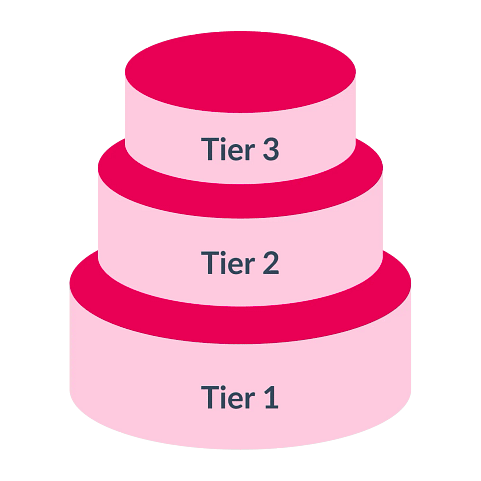Introduction to key vocabulary
The R&W: Vocabulary progression document does not include all the words that children encounter in their lessons; instead, it focuses on the essential words and terms for understanding the subject. These words are carefully selected to help pupils grasp concepts and ideas outlined in the R&W curriculum.
R&W vocabulary is categorised under three curriculum strands:
- Substantive knowledge.
- Personal knowledge.
- Disciplinary knowledge.
This document also highlights specific terms related to particular worldviews, such as ‘moksha’ (Hindu) or ‘salvation’ (Christian).
Consolidating these keywords enables teachers to focus on the vocabulary outlined for each year group, ensuring a strong understanding of which words pupils should already be familiar with and those they will encounter in future years.

Receptive versus expressive vocabulary
Some vocabulary is intentionally used in lessons earlier than indicated in the progression document. For example, ‘faith’ and ‘holy’ are used in KS1 but appear as key vocabulary in Year 3. Pupils often understand vocabulary receptively before they can confidently use it expressively.
Lesson plans guide teachers to model new vocabulary before it is explicitly taught and before pupils are expected to use it themselves. At times, the teacher may model the use of new words while pupils use synonyms.
The year groups listed in the vocabulary progression document indicate when pupils are expected to retain the vocabulary and begin to use it actively in appropriate contexts. The focus is on when vocabulary is used expressively, making it easier for teachers to assess.
Active use of new vocabulary does not necessarily imply complete mastery of each word or concept, as understanding can evolve and deepen over time.
This content is for subscribers only. Join for access today.
This refers to the words a
This content is for subscribers only. Join for access today.
This refers to the
Choosing words to teach
The ‘three-tiers framework’ (Beck, McKeown & Omanson, 1987) has been used to select the words to include in the vocabulary progression. This framework advises focusing instruction on tier 2 vocabulary for the most productive gains.
Tier 1 words have not been included in the progression unless they take on a more specialised meaning (and would therefore be classed as tier 2 or tier 3 words) within the context of R&W. For example, words like ‘spirit,’ ‘chosen’ and ‘messenger’ might be familiar to children in general contexts but have been included in our progression because it is important for children to understand their specific meanings in the context of religious studies.

Tier 3 vocabulary
These words are used infrequently in conversation and are often subject-specific. Textbook glossaries usually focus on tier 3 words as they tend to be abstract in nature. They require explicit teaching and contextualisation.
Tier 2 vocabulary
These are frequently used words appearing across the school curriculum and in written texts. Often, explicit teaching of tier 2 words is not planned, but this can be the most productive place to focus vocabulary instruction.
Tier 1 vocabulary
The most basic words, which typically appear in conversation and are frequently encountered by pupils from an early age. They rarely require explicit teaching because they are already familiar to most pupils.
This content is for subscribers only. Join for access today.
Each unit hub contains a ‘Key
This content is for subscribers only. Join for access today.
Displaying vocabulary can be a simple
